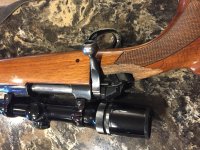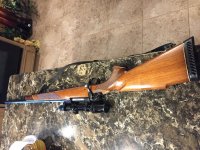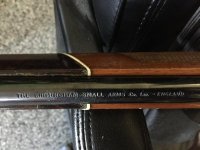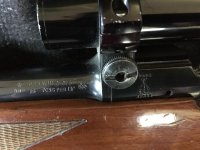whitecoyote
Member
I recently acquired this BSA rifle, 30-06 caliber.
The rifle has a 22" barrel with a integral brake, flip up iron sights (100/200/300), Parker-Hale scope rings, B. Nickel Marburgil 2.5x6 scope (made in Germany).
I did a Internet search, what I came up with was a BSA Majestic Featherweight De Luxe rifle.
I believe it was manufactured in 1959.
Serial #7D29xx
Hopefully there is a BSA expert here that can fill me in on exactly what I have.
Thanks!







The rifle has a 22" barrel with a integral brake, flip up iron sights (100/200/300), Parker-Hale scope rings, B. Nickel Marburgil 2.5x6 scope (made in Germany).
I did a Internet search, what I came up with was a BSA Majestic Featherweight De Luxe rifle.
I believe it was manufactured in 1959.
Serial #7D29xx
Hopefully there is a BSA expert here that can fill me in on exactly what I have.
Thanks!







Last edited:








